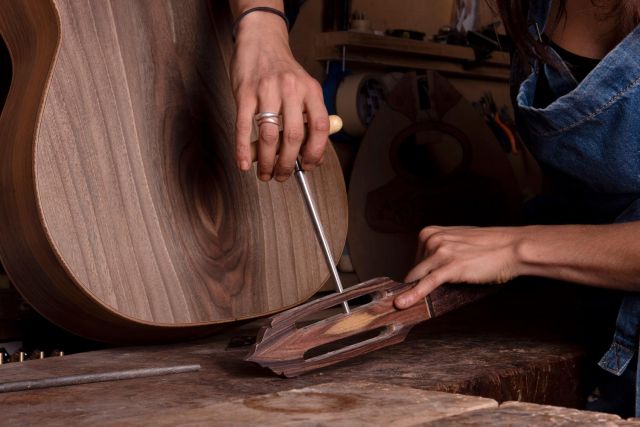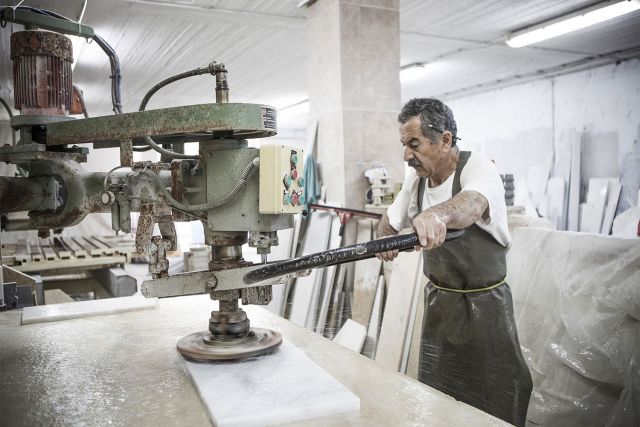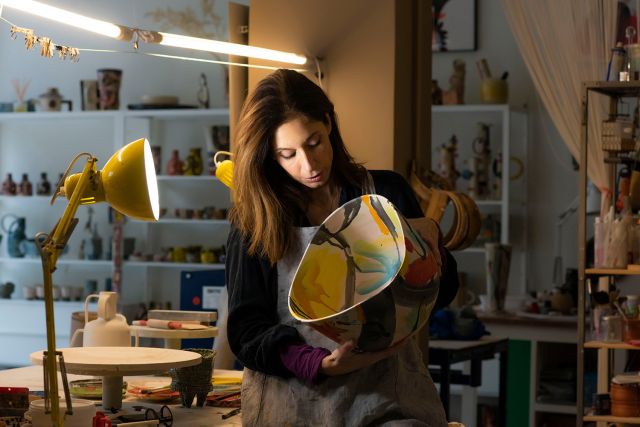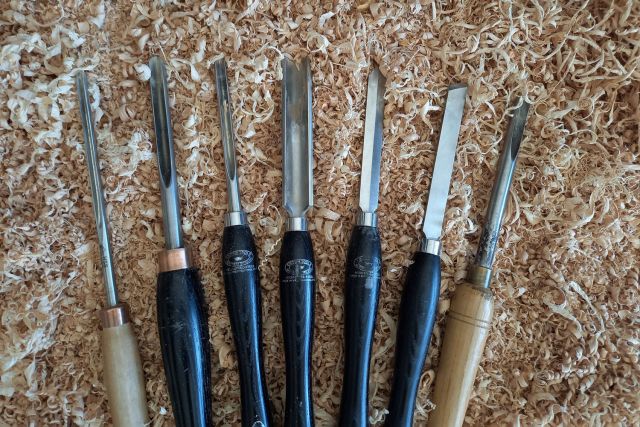Known as the mainland lute, or "Steriano laouto", this pear shaped stringed instrument, tuned A–D–G–C from high to low, is primarily played in the Greek mainland as well as some islands. Usually it accompanies other musical instruments. It has a powerful, yet not overpowering, sound.
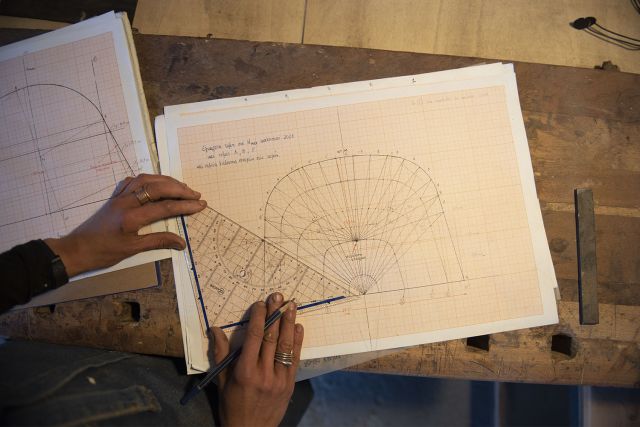
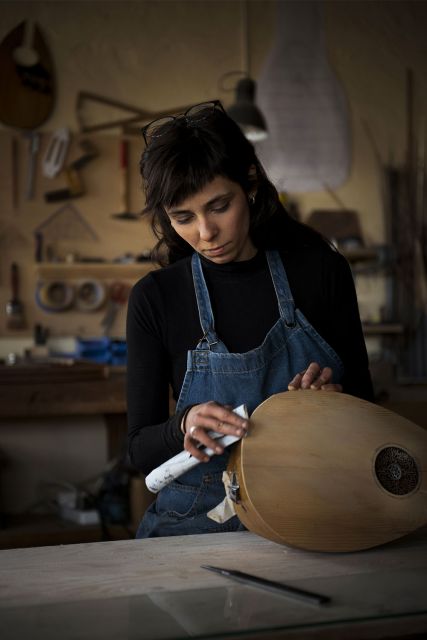
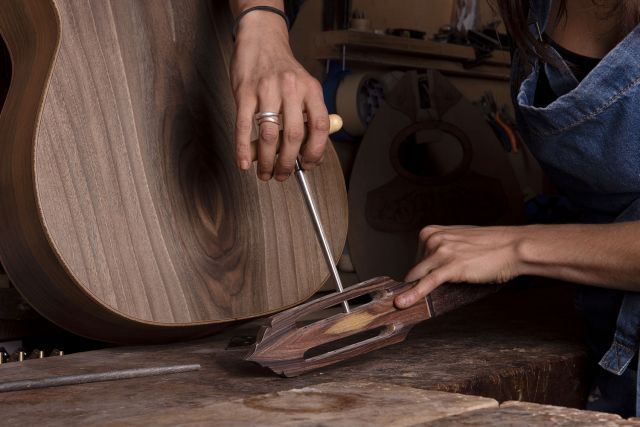
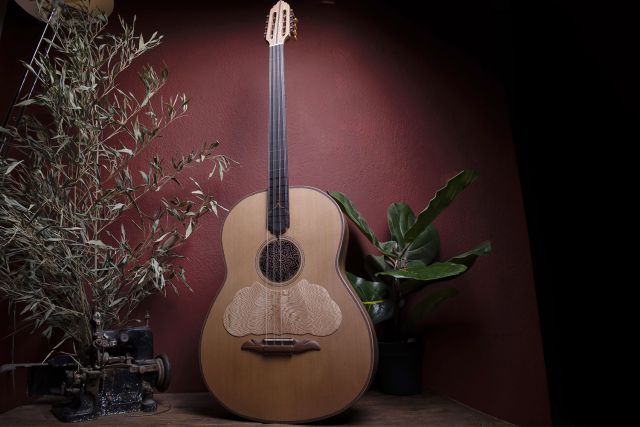
Ageliki Lyssa
- Luthier
- Litochoro Pierias, Greece
- Rising Star
By appointment only
+30 6938269596
Inspired by music and wood
- • Based in Greece, Ageliki works with many clients from abroad
- • Creating a musical instrument takes her a lot of time and effort
- • For her, every piece of wood has its own distinct personality
Ageliki Lyssa started creating musical instruments professionally in 2017 when she opened her workshop. Mainly self taught, Ageliki learned her craft from personal research and experimentation while she also acquired valuable information from visiting and working with experienced instrument makers. “It is not a common profession for women and for this reason, in the beginning, it was not easy for someone to accept me as an apprentice. My father is a carpenter and this may have helped in terms of my contact with the wood.” In her new workshop in Litochoro Pierias, Ageliki creates mainly pear-shaped traditional folk stringed instruments of the Eastern Mediterranean such as laouto, bouzouki, lavta and oud. “This craft is emotionally fulfilling for me, but making a living out of it requires a lot of dedication and long hours of work.”
Read the full interviewWorks
Photo: © Ageliki Lyssa

Photo: © Ageliki Lyssa
This is a relatively large mainland lute and its role in Greek traditional music is primarily that of accompaniment. The two primary contemporary variants of the laouto, one somewhat smaller than the other, are to be found on mainland Greece (steriano laouto) and on the island of Crete (Cretan laouto).
Length 105 cm
Height 37 cm
Depth 22 cm
Diameter 136 cm

Photo: © Ageliki Lyssa
This string instrument is played in Turkish, Greek and Arabic traditional music. It generally features 26 courses of strings, with three strings per course. The name derives from the Arabic word qanun, meaning "rule, law, norm, principle", which is borrowed from the ancient Greek word and musical instrument κανών (rule).
Length 95 cm
Height 43 cm
Depth 10 cm

Photo: © Ageliki Lyssa
This old oud top has been removed from the instrument’s body and – after restoration – it will be glued again. The quality of the wood, from which the instrument is made, is of great importance to its sound. The wood must be solid and sourced from slow growing trees.
Length 75 cm
Height 37 cm
Depth 20 cm
Diameter 140 cm

Photo: © Ageliki Lyssa
This pearl-shaped eight string bouzouki tuned D–A–F–G with double strings from high to low, is mostly played on Greek folk music. The oud tuned C–G–D–A–G–D from high to low, is mostly played in Turkish, Greek and Arabic traditional music.
Length 100 cm
Height 28 cm
Depth 20 cm
Length 70 cm
Height 36 cm
Depth 20 cm
Height 20 cm
Diameter 140 cm





